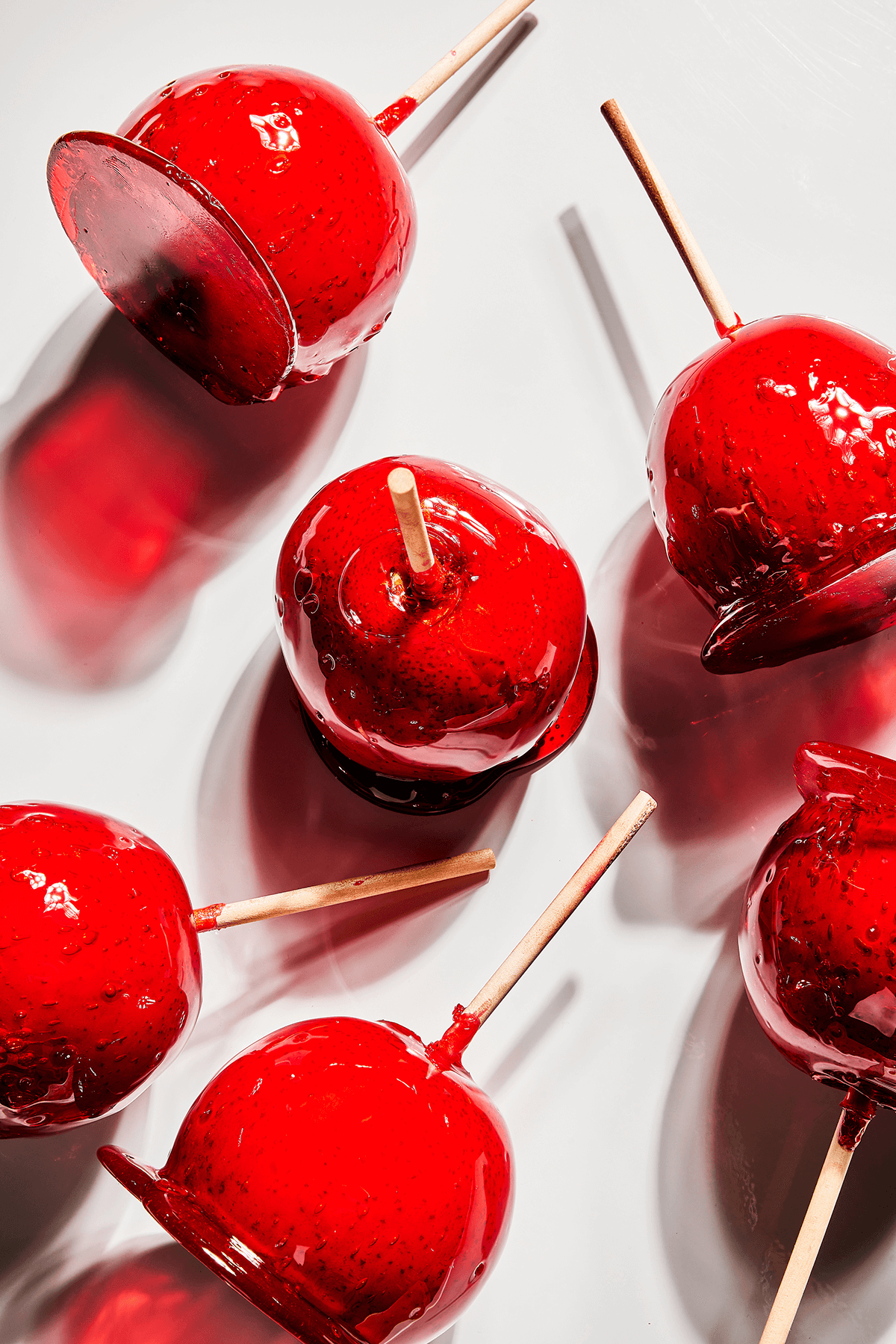Food & Drink
A Classic Candy Apple Never Goes Out of Style
This time of year, Woodlea Bakery sells 80 of the crackly creations—a staple on its menu since opening in 1943—per day.

The candied apple—that shiny, cherry-red treat—was never actually meant to be edible.
Candymaker William Kolb first made them in 1908 as a window display for his Newark, NJ, confectionary shop. At the time, he was experimenting with red cinnamon candy to sell at Christmas and decided the glazed apples would be an enticing way to showcase his sweet. Kolb speared apples with sticks, dipped them into the glaze, then arranged them in his display window.
To his surprise, passersby wanted to buy the apples, so he sold them at five cents apiece. The crackly creations were soon selling by the thousands, before becoming a circus staple and boardwalk treat—and then a part of Halloween history.
These days the mirrored red orbs are still popular at the height of apple season. You can get them all over town, from Kilwins in Fells Point to pretty much any local grocery store. And while you can sometimes find them drizzled with chocolate (or their caramel cousins coated in nuts), the original stop-sign red apples at Woodlea Bakery, pictured above, have remained unchanged since the store first opened in 1943.
Most recipes for the glaze contain the same ingredients—a mix of water, corn syrup, sugar, cherry flavor, red food dye, and cinnamon—but Woodlea sets itself apart by using high-quality fruit.
“We buy fresh apples from the orchards,” says Charles Hergenroeder, the fourth-generation owner of the Baltimore bakery. “Once peaches roll out and fresh apples arrive in the first week of October, we start making apples. We get them from local orchards like Shaw, Baugher’s, or Susquehanna.”
In season, Woodlea sells some 80 apples a day between the original location in Gardenville and their second shop in Bel Air.
“Of course, the week of Halloween, we sell a lot more,” says Hergenroeder. “The adults buy more for themselves than for their kids.”